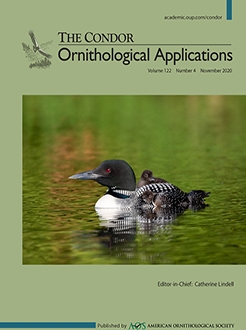Intense trapping of the critically endangered Yellow-crested Cockatoo (Cacatua sulphurea) for the international pet trade has devastated its populations across Indonesia such that populations of >100 individuals remain at only a handful of sites. We combined distance sampling with density surface modeling (DSM) to predict local densities and estimate total population size for one of these areas, Komodo Island, part of Komodo National Park (KNP) in Indonesia. We modeled local density based on topography (topographic wetness index) and habitat types (percentage of palm savanna and deciduous monsoon forest). Our population estimate of 1,113 (95% CI: 587–2,109) individuals on Komodo Island was considerably larger than previous conservative estimates. Our density surface maps showed cockatoos to be absent over much of the island, but present at high densities in wooded valleys. Coincidence between our DSM and a set of independent cockatoo observations was high (93%). Standardized annual counts by KNP staff in selected areas of the island showed increases in cockatoo records from <400 in 2011 to ∼650 in 2017. Taken together, our results indicate that KNP, alongside and indeed because of preserving its iconic Komodo dragons (Varanus komodoensis), is succeeding in protecting a significant population of Indonesia's rarest cockatoo species. To our knowledge this is the first time DSM has been applied to a critically endangered species. Our findings highlight the potential of DSM for locating abundance hotspots, identifying habitat associations, and estimating global population size in a range of threatened taxa, especially if independent datasets can be used to validate model predictions.
LAY SUMMARY
Yellow-crested Cockatoos are threatened by extinction due to illegal trapping for the pet trade. Komodo Island in Indonesia supports one of the largest remaining populations. The island is part of Komodo National Park, famous for its Komodo dragons. A 2006 survey indicated cockatoo numbers might have been declining.
In contrast to previous surveys we sampled the whole island instead of focusing on coastal valleys, which are known to harbor the highest cockatoo densities. We used distance sampling and density surface modeling, which allowed us to estimate how many cockatoos remained undetected and to produce a map of predicted cockatoo densities.
We estimate there are between 600 and 2,100 cockatoos on Komodo, most likely ∼1,100. Komodo National Park authorities also reported an increase in their annual counts of cockatoos from below 400 in 2011 to around 650 in 2017. Thus, the cockatoo population on Komodo Island is large and stable; Komodo National Park is successfully protecting its cockatoos.





